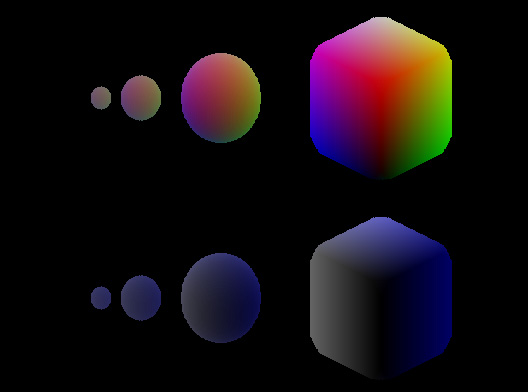By Zevan | December 29, 2008
Actionscript:
-
var userInfo:XML = <users>
-
<user fname="joe" lname="smith" age="31" />
-
<user fname="mildred" lname="calder" age="64" />
-
<user fname="ben" lname="nathanson" age="20" />
-
<user fname="james" lname="biuford" age="19" />
-
<user fname="nick" lname="calhoun" age="45" />
-
</users>;
-
-
-
trace("Users over 20:\n");
-
trace(userInfo.user.(@age> 20).toXMLString());
-
-
trace("\nUsers with the name nick:\n");
-
trace(userInfo.user.(@fname == "nick" ).toXMLString());
-
-
// use regular expressions with e4x
-
trace("\nUsers with name starting with j:\n");
-
trace(userInfo.user.(/^j/.test(@fname)));
-
-
/*
-
outputs:
-
-
Users over 20:
-
-
<user fname="joe" lname="smith" age="31"/>
-
<user fname="mildred" lname="calder" age="64"/>
-
<user fname="nick" lname="calhoun" age="45"/>
-
-
Users with the name nick:
-
-
<user fname="nick" lname="calhoun" age="45"/>
-
-
Users with name starting with j:
-
-
<user fname="joe" lname="smith" age="31"/>
-
<user fname="james" lname="biuford" age="19"/>
-
-
*/
One of the nicest features of E4X is filtering. The above code shows a few simple examples ... the last example makes use of regular expressions -- I first read using regular expressions and E4X somewhere on http://www.darronschall.com/.
I usually prefer to use a database for any kind of info I'll be searching... but if you know you have a relatively small amount of data XML can be a fine way to go.
By Zevan | December 28, 2008
Actionscript:
-
// isometric conversion
-
var centerX:Number=stage.stageWidth/2;
-
var centerY:Number=stage.stageHeight/2;
-
var theta:Number=Math.PI/4;// 45 degrees;
-
var cosX:Number=Math.cos(theta);
-
var sinX:Number=Math.sin(theta);
-
var pnt:Point = new Point();
-
function iso3D(x:Number, y:Number, z:Number):Point {
-
pnt.x = centerX + (x-z) * cosX
-
pnt.y = centerY - (x+z) * 0.5 * sinX - y;
-
return pnt;
-
}
-
// example:
-
var canvas:BitmapData=new BitmapData(stage.stageWidth,stage.stageHeight,true,0xFF000000);
-
addChild(new Bitmap(canvas,"auto",true));
-
var size:int=100;
-
var hs:int=size / 2;
-
var pen:Point = new Point();
-
var vect:Vector3D = new Vector3D();
-
// draw a few shapes with offset:
-
for (var dist:int = 10; dist <= 80; dist *= 2) {
-
// voxel space:
-
for (var i:int = 0; i<size; i++) {
-
for (var j:int = 0; j<size; j++) {
-
for (var k:int = 0; k<size; k++) {
-
vect.x=j-hs;
-
vect.y=i-hs;
-
vect.z=k-hs;
-
pen = iso3D(vect.x,vect.y,vect.z);
-
if (Math.sqrt((vect.x * vect.x) + (vect.y * vect.y) + (vect.z * vect.z)) <dist) {
-
// using Vector3D.distance() is very slow compared to above
-
// a few types of coloring:
-
var xp:Number = pen.x + (dist <<2) - 200;
-
canvas.setPixel(xp, pen.y-100, (i <<16 | j <<8 | k) <<1);
-
canvas.setPixel(xp, pen.y+100, (k <<16 | k <<8 | k+j) );
-
}
-
}
-
}
-
}
-
}
The above will draw this:

You can read more about voxels here.
This isn't the speediest way to do voxels (especially if you want to animate). This was just the first thing that came to mind.
By Zevan | December 27, 2008
Actionscript:
-
var canvas:BitmapData = new BitmapData(500, 500, true, 0xFFFFFFFF);
-
var color:BitmapData= new BitmapData(500, 500, true, 0x81666666);
-
var over:BitmapData = new BitmapData(500, 500, true, 0xFF000000);
-
addChild(new Bitmap(canvas, "auto", true));
-
var circle:Shape = new Shape();
-
circle.graphics.beginFill(0xFFFFFF,1);
-
circle.graphics.drawCircle(0,0,50);
-
var m:Matrix = new Matrix();
-
m.tx = 0;
-
m.ty = 1;
-
addEventListener(Event.ENTER_FRAME, onLoop);
-
function onLoop(evt:Event):void {
-
circle.x = mouseX;
-
circle.y = mouseY;
-
canvas.draw(circle, circle.transform.matrix);
-
canvas.copyPixels(color, color.rect, new Point(0,0), null, null, true);
-
over.copyPixels(canvas, canvas.rect, new Point(0,0), null, null, true);
-
canvas.draw(over, m, null, BlendMode.SCREEN);
-
over.applyFilter(over, over.rect, new Point(-2,-2), new BlurFilter(10,10,1));
-
canvas.draw(over, m, null, BlendMode.SUBTRACT);
-
}
Grayscale emboss technique. More info here.
By Zevan | December 26, 2008
Actionscript:
-
var vars:Dictionary = new Dictionary();
-
-
var sp:Sprite = new Sprite();
-
-
// associate variables with a sprite (or any non-dynamic class)
-
vars[sp] = {posX:100, posY:100, velX:1, velY:1};
-
-
// read
-
trace(vars[sp].posX);
I've heard people mention that they wish the sprite class were dynamic... meaning they wish they could add methods and properties to a Sprite instance at runtime. There's no way I know of to do this, however... the dictionary class can be used to associate variables with any non-dynamic class instance... as it does in this the above example.
The dictionary class is similar to an associative array except that instead of using strings for keys, dictionaries use object instances.
